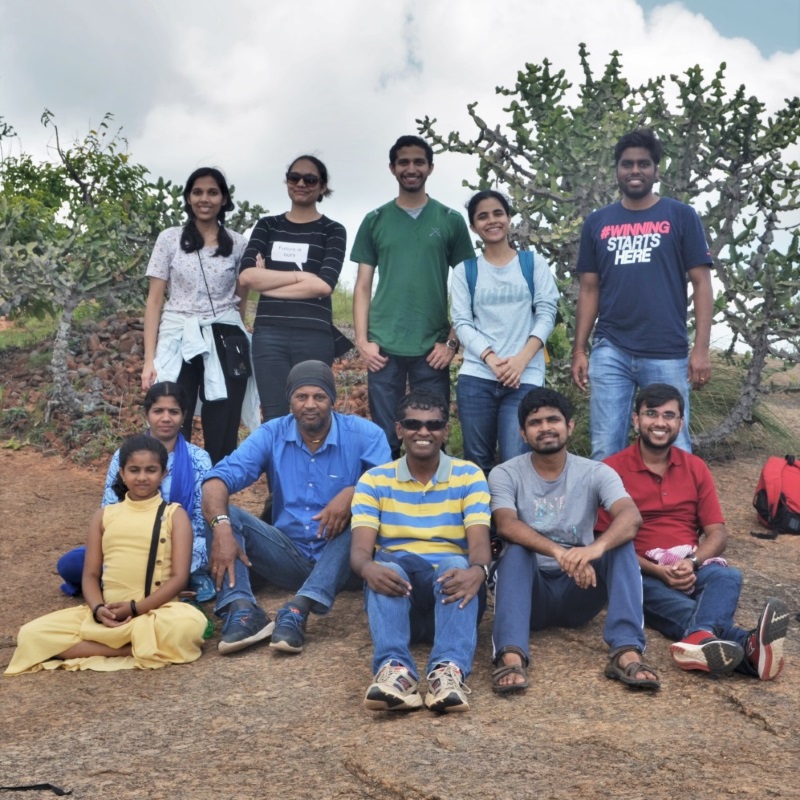Open Biology author James Clement tells us about his latest review highlighting the drawbacks and surprises in understanding Autism Spectrum Disorder (ASD) and Intellectual Disability (ID).

One of the major issues facing neuroscientists, and society, is finding treatment for disorders like Autism Spectrum Disorder (ASD) and Intellectual Disability (ID). There are around 800 genes known to cause ASD and ID; however, only a handful of these are well-characterised due to the lack of a suitable animal model that recapitulates the human disorder, thus preventing researchers from drug testing a specific mutation. Open Biology author James Clement tells us about his latest review highlighting the drawbacks and surprises in understanding ID/ASD.
Tell us about yourself and your research?
My interest from undergraduate days is to understand the functions of the brain and how abnormalities in the brain make a person believe what they are hearing or seeing is real, contrary to truth. My life in neuroscience started as an electrophysiologist when I worked on the olfactory system to understand how the brain computes to detect the directionality of an odour, i.e. to distinguish left from the right side. This experience persuaded me to complete my PhD at University of Bristol. Later, my interest switched to brain-related orders where I worked on understanding the function of SYNGAP1 in brain development and maturation at Scripps, Florida. Along with my colleagues, I demonstrated that SYNGAP1 heterozygous mutation (one copy of the allele affected; SYNGAP1+/-) leads to early maturation of the brain and that causes Intellectual Disability (ID) and Autism Spectrum Disorder (ASD).
Since returning to India, the Clement laboratory continues to understand how the mutations in SYNGAP1 gene cause ID/ASD. Although around 800 genes are implicated in ID/ASD, only a handful of rodent models are available to study human-related disease/disorders. Using Syngap1+/- mouse model (which regulates several pathophysiological and behavioural deficits reported in human patients), one of our primary goals is to understand the development and functions of Syngap1 in neuronal and non-neuronal brain cells at the synaptic and behavioural levels, and we do so using electrophysiology, 2-photon imaging, biochemical, and molecular techniques. One of the significant goals lingering in the minds of neuroscientists is to find drugs that can, to an extent, alleviate the symptoms and help the patients to lead normal activities. Therefore, the other aim of our lab is to use the knowledge obtained from basic research to translate to potential therapeutic targets to restore behavioural problems.
What is your review about?
The review provides concise yet in-depth literature on the characteristics of different transgenic mouse models available to study various ID/ASD. There are many reviews on ID/ASD, but most are either focused on behavioural and molecular or behavioural and physiological aspects of a specific type of a mutation. Therefore, keeping young graduate students (and the lack of concise reviews) in mind, we have linked the effect of the five different mutations causing ID/ASD in humans to the studies done on respective mouse models. Not many graduate students understand how to select an excellent model to study human-related diseases/disorders. In this review, we have addressed these concerns by highlighting the criteria to choose a good model. Briefly, our review has focused on five significant genes that are prevalent in human patients: SYNGAP1, FMR1, NEUROLIGINS, SHANK3, and MECP2. We have highlighted the role of these genes and their proteins in synaptic functions, signalling mechanisms, and behavioural phenotypes. We have discussed their importance in regulating critical periods of development (milestones in babies and children), limitations of drugs in clinical trials, and emphasised potential therapeutic strategies for ID/ASD. This review should be of interest not only to general readers but also to those who work on synaptic plasticity, learning and memory, and clinicians who work on ID/ASD.
Were there any surprising observations in the literature looking at the aetiologies of Intellectual Disability and Autism Spectrum Disorder?
The most striking observation from the literature was the remarkable correlation of environmental factors linking ID/ASD. Though ID and ASD have a definite genetic basis, the involvement of environmental factors such as exposure to drugs, alcohol, and contaminated food/water has significantly contributed to the aetiology of ID and ASD.
What is the future of your research?
Although studies on the impact of mutations on neuronal function have made remarkable progress due to technological advances, the reasons for drug failures in clinical trials and inability to restore behavioural features is still a mystery. Currently, only symptom-based drugs are prescribed to patients but not to alleviate the prominent deficiencies, i.e. to restore behavioural and cognitive symptoms. Therefore, it is imperative we improve our understanding of the fundamental mechanisms of neuronal and non-neuronal functions in ID/ASD, which is widely lacking, and develop new therapeutic strategies for the treatment of ID and ASD. The biggest challenge facing other neuroscientists and us is to restore neuronal and behavioural functions after brain maturation.
How was your experience publishing with Royal Society Publishing?
Publishing with the Royal Society was a remarkable learning experience. The swift review and evaluation system ensured the smooth process of publishing the manuscript. Notably, the constructive comments from the reviewers not only helped in improving the quality of the manuscript but also expanded the literature of ID/ASD discussed in the manuscript. Besides, the transparent review procedure improved our confidence in our work and the whole review process. The suggestions given by the reviewers were critical and valuable. Overall, it was an excellent learning experience, especially for the student authors.
Open Biology is looking to publish more high quality research articles in neuroscience. Find out more about our author benefits and submission process.
Main image:
Clement lab during a field trip – credit: James Clement.




